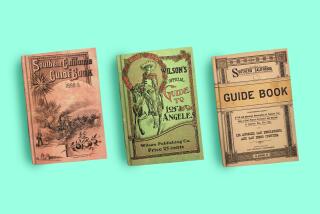Revamping Rough Guides Web Site
- Share via
When Rough Guides announced it was putting the full text of its candid, opinionated travel narratives on the Internet, the unusual move prompted a surge of skepticism from booksellers and rival publishers.
Some worried that readers wouldn’t pay for a hard copy of something they could download for free. Others argued that a sheaf of computer printouts, no matter how convenient for stuffing into a backpack, would never replace the slick photos and detailed maps of a physical guidebook.
Three years later, the jury is still out--and Rough Guides, which launched a revamped Web site this month, exemplifies the ever-changing landscape of guidebook publishing on the Web.
Most of Rough Guides’ competitors, including Lonely Planet (https://www.lonelyplanet.com), Moon Handbooks (https://www.moon.com), Frommer’s (https://www.frommers.com) and Fodor’s (https://www.fodors.com), have opted to incorporate a sampling, but not all, of their print-based material into their Web sites. Fodor’s site, for example, uses content from its Gold Guide series as the basis for an innovative, interactive guidebook that lets travelers choose the kind of information they’re interested in. Helena, Mont.-based Insiders Guides (https://www.insiders.com) provides the full text for about three dozen titles on its no-nonsense site, while Fielding Worldwide (https://www.fieldingtravel.com) reproduces the full text of its print cruise guide (the updated 1999 edition goes online in January). The book is supplemented with the Crow’s Nest, a lively online forum for cruise aficionados.
Some publishers have turned the tables: Moon’s popular print guide, Road Trip USA, was originally launched on the publisher’s Web site as an interactive work in progress. The book is still online, with updates added every two months. Another print guidebook that made an electronic debut is The Nunavut Handbook (https://www.arctic-travel.com). The Web site celebrates Canada’s new territory with features that make the most of cyberspace, including a “virtual reality” tour of a lonely Arctic outpost and audio files that help desktop travelers learn a few phrases of the native language, Inuktitut.
Rough Guides’ ambitious venture (https://www.roughguides.com/travel) encompasses the full text of the series’ top-selling England, Europe, New York, San Francisco and USA titles, plus excerpts from several other guides, for coverage of about 4,000 individual destinations. New titles will be added in two months, with all 103 Rough Guides travel books slated to be online within the next year and a half.
Unlike Rough Guides’ former effort, which basically reproduced the full text of 11 titles, the new site adds features unavailable in its books: travel reservations through Internet Travel Network, a biweekly travel magazine and a bulletin board where fellow travelers can post comments and advice.
In the short term, at least, the reincarnated Rough Guides site lives up to its name. A confusing, cluttered design makes reading and navigating from one area to another a chore, and the search engine has plenty of bugs. For example, a quest for “South Africa” came up empty, despite the fact that the site includes profiles on Cape Town and Johannesburg and a South Africa dispatch in the biweekly newsletter.
Indeed, the Rough Guides Web site includes prominent photos of the print guidebooks, along with pitches to buy the real McCoy. And no one, including Rough Guides, expects the appeal of a well-thumbed paper guidebook to evaporate any time soon.
“We’re all trying to work the intersection between electronic and print, but we don’t want to put up text for text’s sake,” says Moon publisher Bill Newlin. Readers of online guidebooks “are forced to pre-identify what they’re interested in, and you can still scan information much more quickly in a book format.”
Adds Priscilla Ulene of Los Angeles’ Traveler’s Bookcase: “There are still plenty of people who want to hold a book in their hands.”
Electronic Explorer appears once a month. Laura Bly welcomes comments and questions; her e-mail address is laura.bly@news.latimes.com.
More to Read
Sign up for The Wild
We’ll help you find the best places to hike, bike and run, as well as the perfect silent spots for meditation and yoga.
You may occasionally receive promotional content from the Los Angeles Times.






